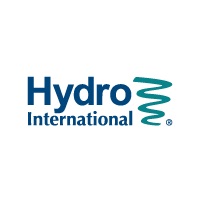EU Water Framework Directive

The EU Water Framework Directive (WFD) is a unifying framework that drives water legislation in member EU countries. Introduced in 2000 and implemented in 2003, it has set challenging environmental legislative priorities and timescales that transcend regional and national interests.
The WFD’s main objective
The WFD aims to improve the total water environment of its member states from source to sea, with the target of achieving and maintaining water quality to ‘good’ standard by 2015.
How will it achieve its goal?
The WFD drives water quality improvement planning along total river catchment areas in the EU – from where the rain falls, through groundwater resources, man-made and natural watercourses, all the water usage cycles and discharges, to the estuarine and coastal waters which receive the water from the land.
This River Basin Management approach acknowledges the hydrological and geographical imperatives of a river system which cuts across regional and national boundaries. The directive aims to address the sometimes conflicting interests of countries on the same river system with different water priorities.
By considering River Basin catchments, the way was opened to introduce the ‘polluter pays’ principle where common quality standards could be imposed and redress made no matter where the original pollution occurred in the river basin.
Daughter Directives
The WFD is supplemented by its sister EU Floods Directive and by detailed ‘daughter’ directives, the Groundwater Directive, and the Environmental Quality Standards Directive. These control pollution of resources and list priority toxic substances which need to be controlled or eliminated such as heavy metals and organo-phosphates.
The WFD and its daughter directives are being achieved through each member state enacting its own enabling legislation, country by country; this allows them to take account of their individual existing legal frameworks. Thus, in the UK, the Directive is given force through legislation such as the Drinking Water, Ground Water and Sewage Sludge Directives.
River Basin Management Plans
The WFD requires the production of River Basin Management Plans, which must show a programme of measures for what needs to be done to achieve ‘good’ status by 2015. The deadline for completion of the first RBMPs was December 2010.
When will the WFD targets be achieved?
The prime target date for achieving ‘good’ water quality is set as 2015, but this is not the end of the WFD. It recognises that there may be conditions under which it will not be possible to achieve good status by 2015. Planning and programmes are continuing in six year cycles until 2030 with the way open for subsequent development. Some member states are not as far advanced in meeting quality objectives as others. Nevertheless, most member states have seen significant improvement.
How is water quality assessed?
Key measurements in the River Basin are: the healthy status of the aquatic ecology; with specific protection of unique and valuable habitats; protection of drinking water resources; protection of bathing water.
What does it mean for surface water?
Controlling water volume is inherent in the WFD’s objectives, as uncontrolled surface flow, or flooding, can cause unmanageable quality problems. Protecting the aquatic ecology as a whole also places an overarching emphasis on improving the quality of all surface waters, temporary and permanent.
Diffuse Pollution
Water quality control has to start from the primary source where the rain falls. Whether the rainwater is stored by natural or man-made techniques, or flows directly into drains or streams, if the surface water quality is poor at the start, it will be far more difficult to rectify downstream.
While pollution at point sources, by specific incidents, is relatively easily identifiable for action, it is increasing recognised that diffuse pollution of surface water is as large a problem. Diffuse pollution is also closely allied to uncontrolled surface water flow, including flooding.
Causes of diffuse pollution, however, can be more difficult to identify and isolate, and often demand a more holistic approach to prevention than point sources, e.g. refining established agricultural practices, or re-engineering road surface water control.
Improving surface water in the UK
Legislative controls for surface water quality in England and Wales have historically been less prescriptive than other areas of water control regulation. Scotland is further ahead in terms of treatment requirements as part of SUDS through the Water, Environment and Water Services Act, Scotland.
New National Standards for SUDS as part of the Flood and Water Management Act in England and Wales are expected to include stricter requirements for treatment standards as part of SUDS schemes.
Driven by the requirements of WFD, increasing demands are expected to be placed on water quality treatment e.g. to remove pollutants trapped in silts and sediments collected over hard surfaces and highways such a oils, petrols and heavy metals.
Sustainable Approaches
The WFD recognises that naturally-occurring sustainable water systems for volume and quality such as vegetation and tree covered surfaces where rain falls, infiltration into soil and aquifers, and retention and cleansing of water within swales and ponds, are all highly desirable, and can be effective.
However, River Basin Management planning also acknowledges that man’s activities and requirements mean that naturally-occurring measures are frequently insufficient, even if completely restored. The Plan’s provisions therefore allow for a toolbox of engineered sustainable surface water management techniques to supplement the natural systems.
SUDS are the key
In the UK, Sustainable Drainage Systems were established in the 1990s as best practice for surface water quantity and quality management. SUDS comprise a number of naturally-derived and sustainably engineered techniques, which can be combined in various ways to create the most appropriate solution for any location, from rural to urban.
SUDS principles and techniques now underpin planning and flood and water management guidance and implementation across the UK, and are major weapons in meeting the objectives of the WFD in its continuing cycles.
